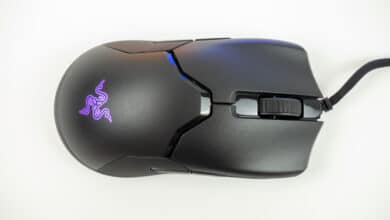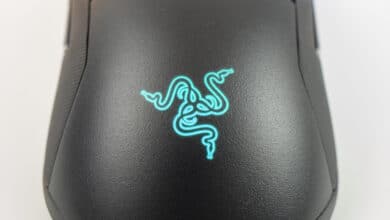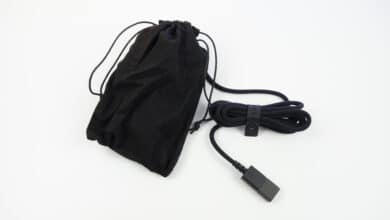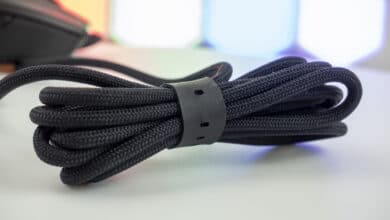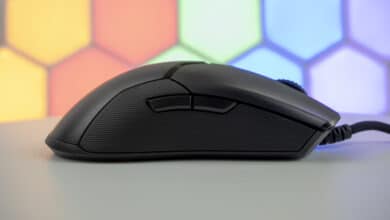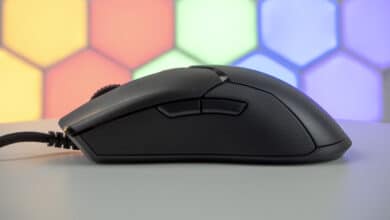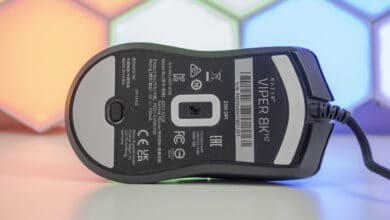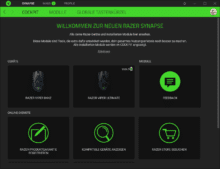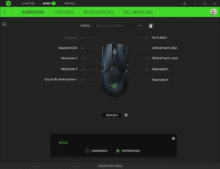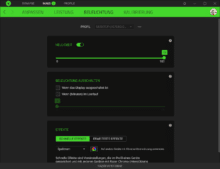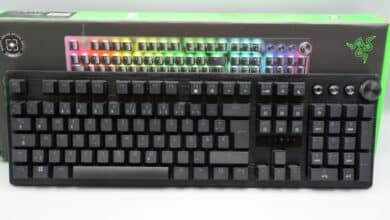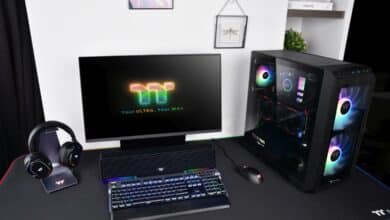At the beginning of October last year, we reported that Razer has a polling revolution in the works. The goal: mice with a polling rate of over 7,000 Hz. Now the result is finally on the market and even delivers a full 8,000 Hz. The company is not exclusively concerned with more hertz, but also with lower latency on the peripheral level and the internal workmanship of all information. Of course, the Razer Viper 8k is primarily aimed at e-sports, but everyone who is at home in competitive games should now take a closer look – and read.
Several manufacturers have already tried to bring mice with over 1,000 Hz onto the market. So far, however, this has been disappointing for the buyer, as the mice only delivered peak rates, but no continuous performance above 1,000 Hz – thus more marketing than truth. Accordingly, we were already skeptical about the new Viper in October. However, first tests already showed at that time that Razer was by no means only out for marketing.
We had a test model before the release on January 28, 2021, which we thoroughly examined. Let’s see if the Razer Viper 8k is eight times faster than previous gaming mice and if it’s worth it.
Specifications
| Query rate | 8000 Hz |
| Sensor | Optical sensor |
| Speed cursor | 20,000 DPI |
| Speed Sensor | 650 IPS |
| Switch | Optical 2nd gen Razer mouse switches |
| Clicks | 70 million |
| Usability | Left- and right-handed |
| Number of keys | 8, all programmable |
| On board memory | Yes |
| Storable profiles | 5 |
| RGB lighting | Yes |
| Cable | USB Type-A |
| Cable length | 1.8 m |
| Dimensions | 126.73 x 57.6 x 37.81 mm |
| Weight | 71 g |
| Price | 89,99 Euro |
Optically no novelty
The market novelty is delivered in the usual black-green packaging, which looks classy and like gaming at the same time. Nothing new awaits us on the inside either, as we already knew that the 8k variant is based on the usual Viper case. The only new thing is the small cloth bag that comes with it.
The look of the Viper 8k is defined by the simple synchronous look that allows both left and right-handed users to use the mouse. Futuristic accents have been omitted, which we personally like – after all, it’s all about the inner workings, which is meant to impress.
Other than that, it’s worth mentioning that it feels good in the hand. Moreover, the sides are covered with finely nubbed rubber surfaces, which increases the grip – even during sweaty battles. What stands out here is the fact that the rubber sides are part of the case and not just glued on. Thus, Razer once again delivers quality up to this point and furthermore even lightness. At 71 grams, it’s no featherweight, but cumbersome is something else.
Underneath the mouse are four PTFE feet that promote better gliding over the mouse pad. The mouse wheel also has a rubber surface, making it wonderful to handle. On top of that, Razer’s snake logo shows up on the front of the surface and can be colorfully illuminated (RGB).
All in all, we have a handy and high-quality workmanship mouse in our hands. Here, the gaming manufacturer has already paid detailed attention to speed and manageability on the outside, so that the inner performance can ultimately be lived out by the Razer Viper 8k.
It’s all in the mix
For years, peripheral manufacturers have been cranking up the DPI numbers. But that alone isn’t enough to craft a faster mouse for e-sports; it’s the mix that matters. And so Razer has dedicated itself to all areas, not just the query rate.
With 20,000 DPI, the Viper 8k comes around the corner with a decent number. The cursor on the monitor seems correspondingly fast to us during testing. Whereby we should call it less fast, but rather a smoother cursor movement. In terms of Aim, the Viper can’t be beaten by any other mouse. To what extent this is useful in the end is something everyone has to decide for themselves. It’s nothing new that pro gamers don’t play with such numbers. However, no mice have been used in connection with 8,000 hertz so far either.
Of course, to make the mix perfect, an efficient sensor is still needed. But more about that later. First, we’ll go into Razer’s so-called HyperPolling technology.
The secret: HyperPolling technology
The polling rate is also called interrogation rate in German and refers to the rate at which the mouse sends data to the PC. The higher the frequency, the lower the delay on the screen. What is usually 1,000 Hz – i.e. 1,000 queries per second – increases eightfold to 8,000 Hz in the Razer Viper 8k. However, a suitable monitor counterpart is also necessary for this. Monitors with high refresh rates and low response times will warmly accept the 8k.

In conjunction with the DPI, the cursor not only gets a smoother movement, but also a smoother one, avoiding micro-jerks.
Besides the polling rate, the HyperPolling technology also improves the peripheral latency. That is, the time delay between actuating the mouse and the workmanship of it. What normally lies between 1 and 4 ms, the Viper 8k tops with well under 1 ms. Ultimately, no time is lost from the moment you move the mouse even a touch. Now that’s playing in real time!
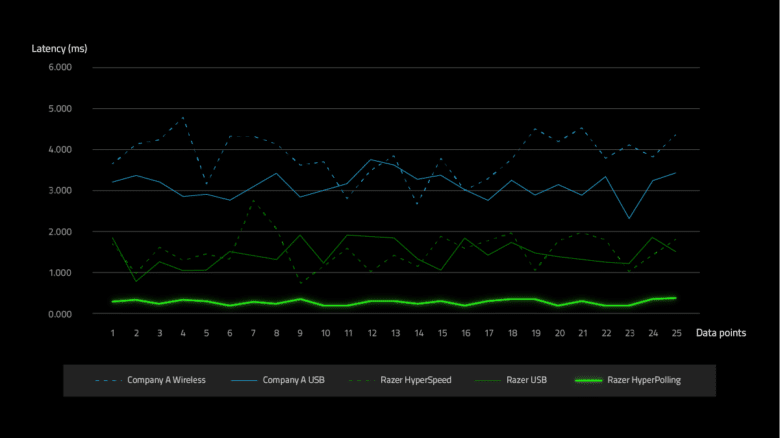
Although peripheral latency reduces precision in gaming, the 8,000 Hz polling rate works against it. Accordingly, the advantage is also evident in our tests. The eternal increase of DPI numbers hasn’t brought anything for years. Supplement it, as Razer has done with HyperPolling technology, with an increased polling rate and lower latency, and the story already looks different. But that’s not all, movement must eventually be detected by the Viper 8k just as quickly as it processes information. And that’s what the sensor is responsible for.
What’s underneath the Viper
Built into the Viper 8k is the Razer Focus+ optical sensor. This was created in collaboration with Pixart, a company that has worked with Razer on previous models.
The sensor manages a scanning speed of up to 650 IPS and calibrates itself to the surface in question all by itself. This allows the mouse to create a resolution accuracy of over 99 percent. Razer calls this Smart Tracking.
Likewise, the user can set the distance at which the mouse resumes tracking movements. In e-sports, a very low setting is usually used here.
Our tests also yielded a pleasing result here. Motion Sync also contributed to this. This is the increase of the sensor activity so that it works synchronously with the intervals in which the computer extracts information that it gets from the mouse.
While most of the Viper 8k’s features aren’t immediately obvious, the big picture makes perfect sense in the end and why Razer is dubbing it a novelty. Whether it really ends up improving the pro gamer is another story.
Optical instead of mechanical should flatter the inner performance
The overall picture of the Viper 8k is completed by optical mouse switches, whose tactile feedback has been increased. Thus, you also get to hear acoustically when the mouse does its work 1:1. The advantage of the optical switches is the fact that physical contact is dispensed with and purely infrared is used. This promotes the transmission of every movement to the mouse and thus ultimately to the PC in terms of time.
Another advantage over mechanical switches is durability. Due to the contactless transmission of the keystrokes, less wear and tear is also expected with frequent use. According to Razer, it should be up to 70 million clicks, which the Viper 8k endures.
In total, the Hyper mouse is equipped with 8 buttons, all of which are individually programmable – with the help of software, of course.
Configured with Synapse 3
The Viper 8k can be configured via Razer’s Synapse 3 software. Not only is it possible to program the buttons, but also to save up to five settings profiles. This works via the on-board memory or online via the cloud.
In addition, the Razer Viper 8k is equipped with RGB lighting as befits its status. This can be customized with 16.8 million different colors as well as numerous effects and can also be configured via Synapse 3.
We like the interface of the software very much.
Conclusion
The Razer Viper 8k is not for the office or for Tetris players. To see the benefits of this performance monster, you need games that are all about time, aim, and precision. Otherwise, you won’t see any difference to the normal Viper model or the Ultimate.
The mixture of a scanning rate of 8,000 Hz, a maximum cursor speed of 20,000 DPI and a sensor that can scan 650 IPS really results in a world first for e-sports. Uniting it all is the HyperPolling technology that Razer has spent so long tweaking.
This time around, you can actually say a mouse has become more powerful and, most importantly, measurably outperforms the commercially available 1,000 Hz. The Razer Viper 8k is not just a marketing product, but a high-performance product for e-sports and hardcore gamers. In terms of price, it does not differ from the usual Viper version: 89.90 Euros are absolutely within reason in our opinion.
We are still holding back a bit in the case of the Viper 8k and give it the Gold Award, as we did with the original Viper and Viper Ultimate. We were able to see the potential of the Razer mouse in our test, but it remains to be seen how it will be received in e-sports and how it will give pro gamers an advantage over previous mice. However, those looking to buy a Razer mouse anyway should definitely take a closer look at the Viper 8k right now if you’re into competitive gaming.
Razer Viper 8k
Workmanship
Featues
Ergonomics
Software
Value for money
93/100
The combination of an 8,000 Hz polling rate, 20,000 DPI, low peripheral latency, and a fine sensor gives the Razer Viper 8k world-first status. This mouse is not intended for common use, but is aimed at e-sportsmen and hardcore gamers.
